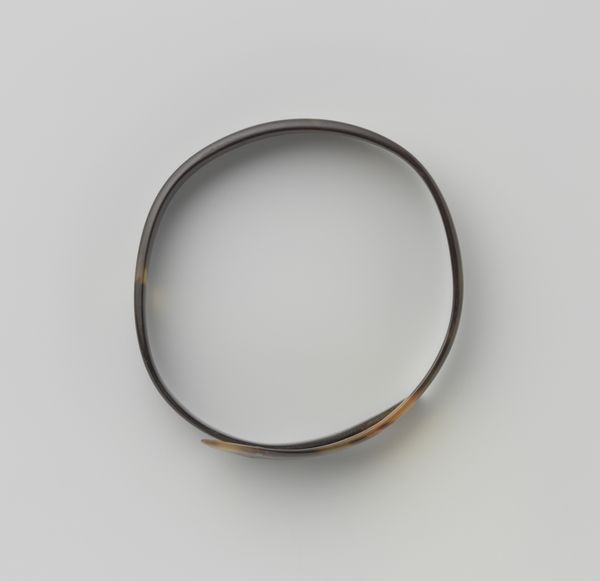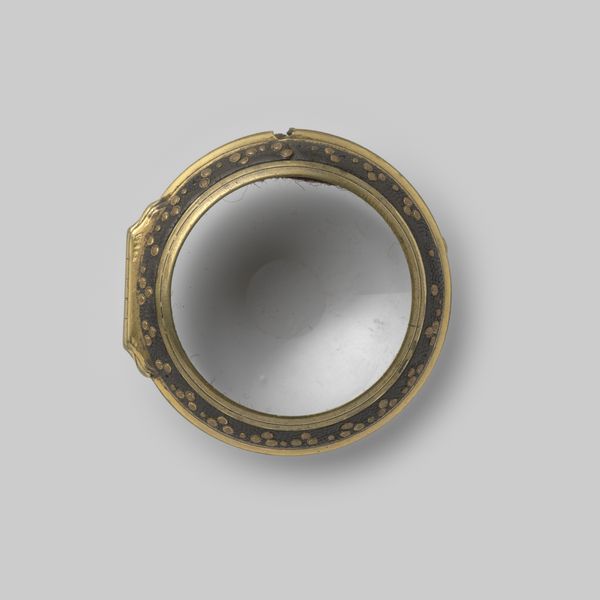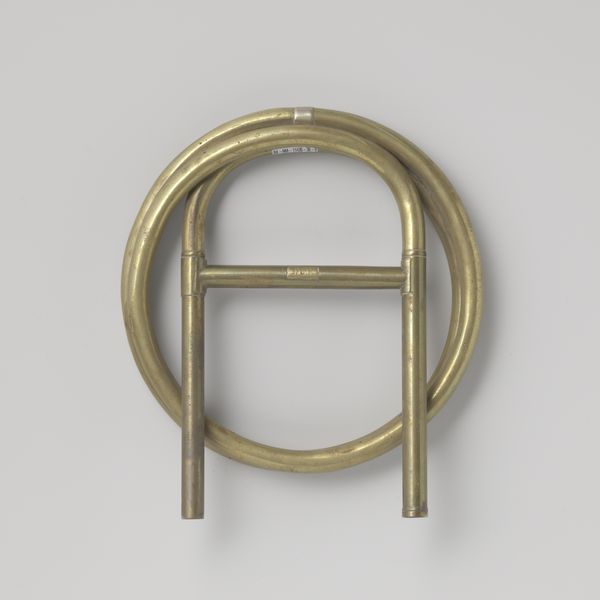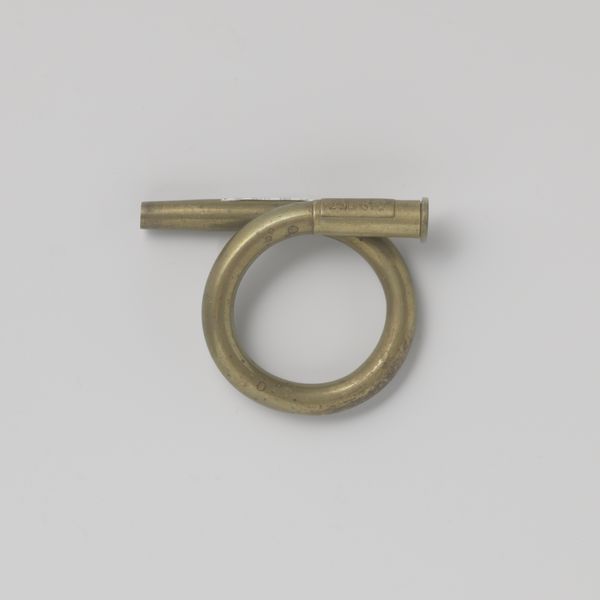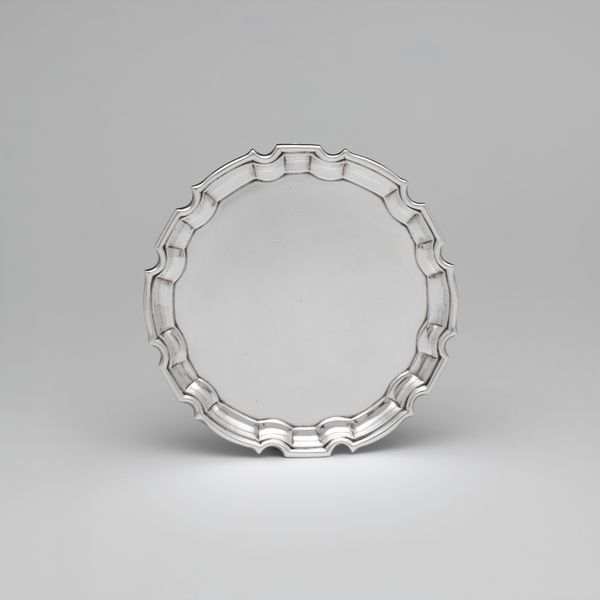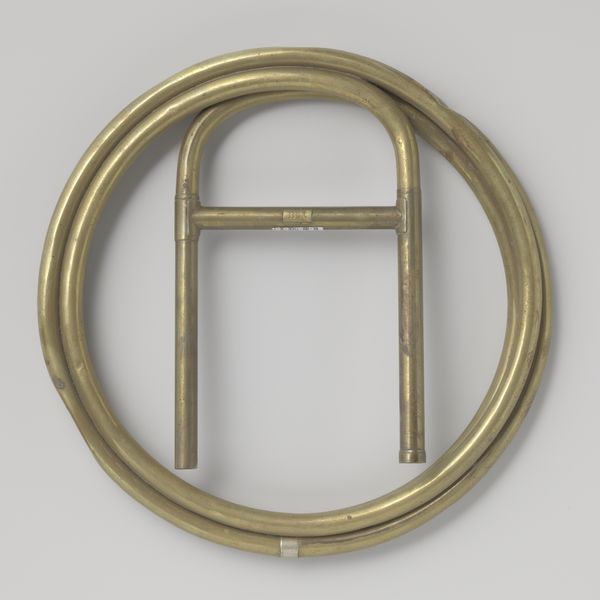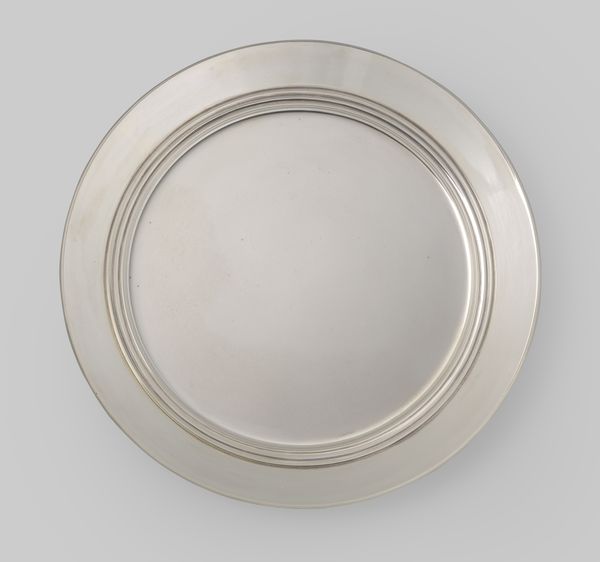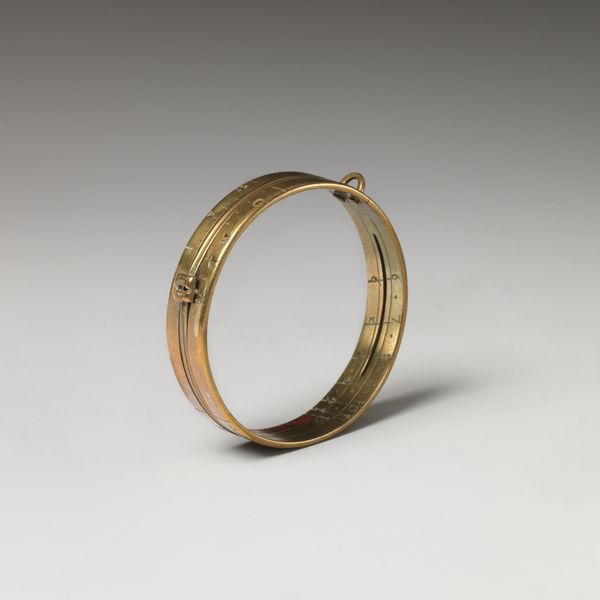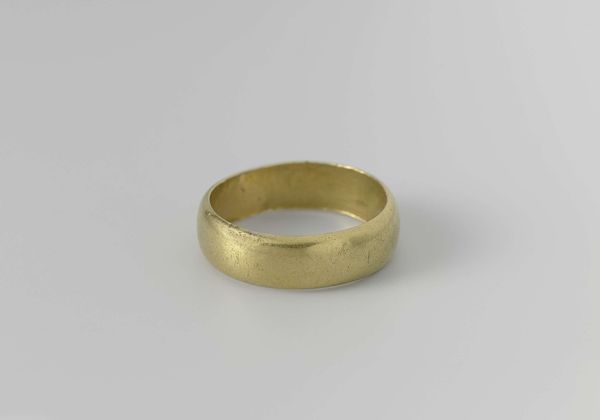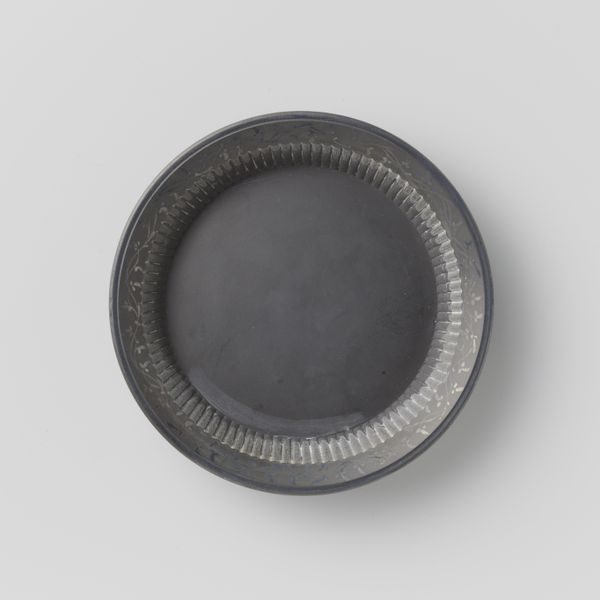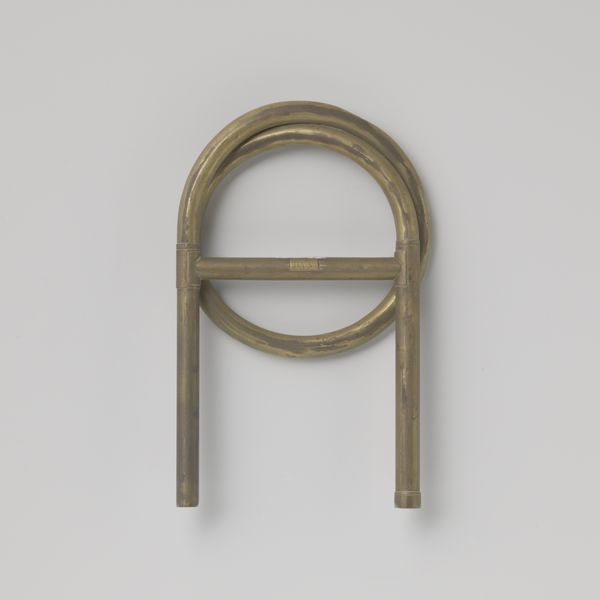
metal, sculpture
#
metal
#
form
#
geometric
#
sculpture
#
abstraction
Dimensions: height 0.7 cm, width 6.9 cm, depth 6.3 cm
Copyright: Rijks Museum: Open Domain
Curator: Here we have a work titled "Slavenarmband," a metal bracelet created sometime between 1953 and 1965 by the firm A.C. Bastiaenen. My initial impression is how pristine and smooth it appears, the perfect circular form radiating a quiet elegance. Editor: It is deceptively simple, isn't it? The name itself, translating to "slave bracelet," carries a weighty historical irony. The polished surface belies a complex narrative about ownership, adornment, and the human cost often associated with precious materials like gold. I am struck by how this contrasts with its appearance. Curator: Yes, its beauty lies in its fundamental geometric shape. The unadorned circle, flawless in its execution, is the key to grasping its aesthetic achievement. One can explore its line, proportion, surface quality and its relation to positive and negative space around it, if worn by someone. Editor: And by naming it such, A.C. Bastiaenen prompts us to question whose hands crafted the metal, and at what expense? It is imperative to interrogate how this object reflects the labor, exploitation, and power dynamics of that time. It serves as an uncanny reminder that even objects celebrated for their design may conceal unsettling realities. Curator: Still, you cannot dismiss the impact of the firm’s construction. The bracelet has a sense of wholeness that makes it timeless. Editor: Agreed. It presents an entry point, perhaps unintentionally, to reconsider jewelry's ties to cultural extraction. The gleam it presents can blind one from critical dialogues. Curator: Precisely. By studying the qualities, we begin to unlock potential meaning as well as historical significance. Editor: A haunting paradox; beauty born of the very system it seeks to subvert. I will look at it in a different light from now.
Comments
No comments
Be the first to comment and join the conversation on the ultimate creative platform.

